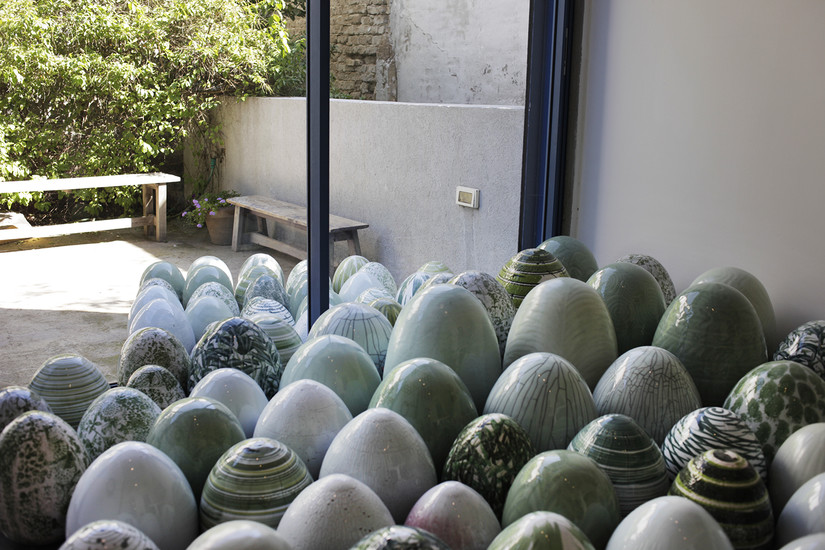Columbus' Egg
Martha Rieger
Curator: Irena Gordon
Martha Rieger brings together the egg shape and its symbolism and the idea of garden in the Eastern and Western civilizations as a model of nature. Her “Columbus’ eggs” combine, metaphorically and physically, the tradition and knowledge of ceramics with mass production, and with the aura of the unique work of art, thus constructing a space which is both internal and external, historical and personal.
[collapse collapsed title="Read more" class="read-more"]
Both the egg and the garden are loaded with autobiographical aspects of memory and subconsciousness, fantasy and reality. She creates an underlying trail between her life in Brazil and Israel and the porcelain’s journey from East to West; beginning with her mother’s plant nursery in Rio de Janeiro and the city’s decorated pavements, continuing with the traditional models of the Far East and ending with local motives of the Middle East – palm trees and watermelon fields, mesmerizing by their initial beauty, but gradually seem to be more like warheads or bombshells.
“Columbus’ egg” is a legendary story connecting the travels and discoveries of Christopher Columbus with the humoristic and apparently simple challenge of balancing an egg on its one end. The myth, which demonstrates the value of creative thinking, intersects with the geographical, material and emotional journeys which are at the heart of Rieger’s work. Rieger cuts and disrupts the Chinese decals – the trade mark of the Chinese porcelain ancient tradition on the one hand, and of its cheap commercial actuality. She thus creates a spectacular yet dismaying view, based on symbolic and autobiographical ornaments, combining religious symbols, botanic motives and her own finger prints. This landscape is not one easy to grasp at once as it offers the beholder a sculptural vision filled with beauty and disorientation. Simultaneously, her works comprise a topography of fragments and cracks that originates in the conflict in ceramic art, closed versus open vessels, the density of the material versus the fragility of the shell and the interaction between the rough ceramic material and the delicate porcelain. Rieger presents the broken pieces next to the complete form, thus creating an alternative primordial, dream-like surface which renders the sensation of being on the edge of an abyss.
Irena Gordon, Curator
[/collapse]





